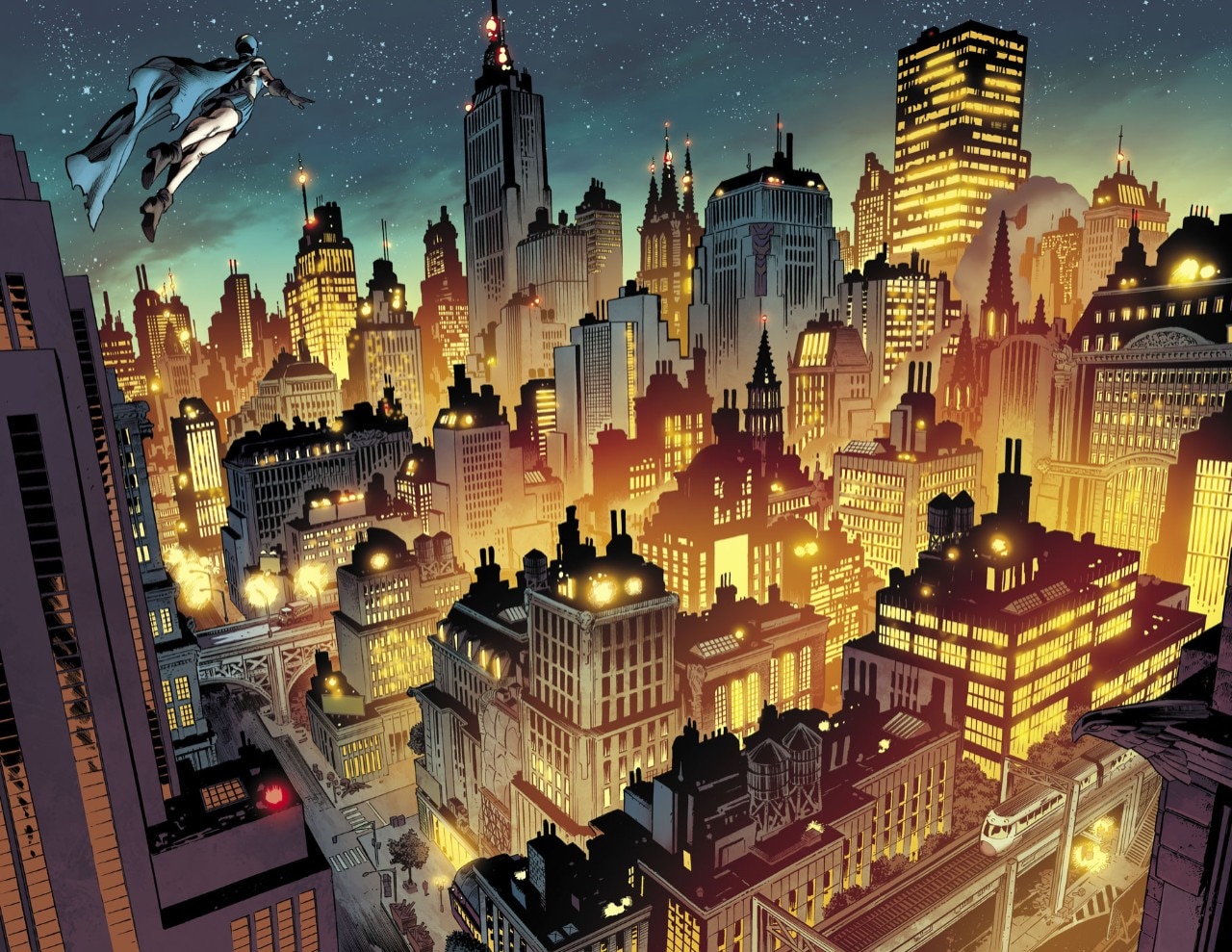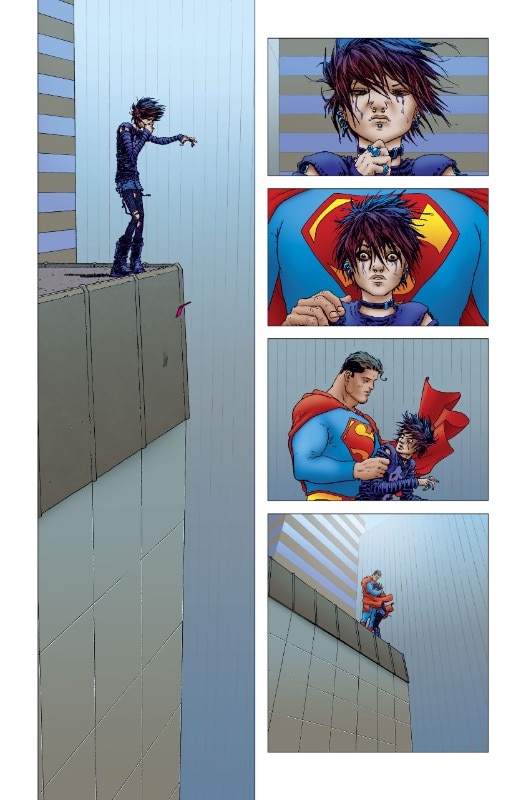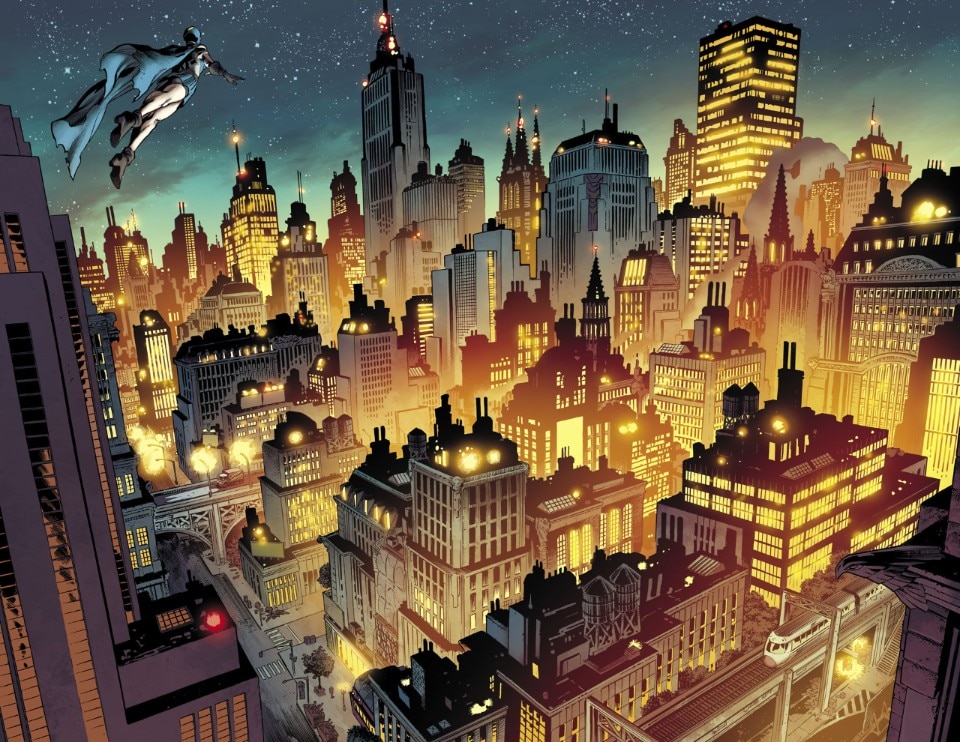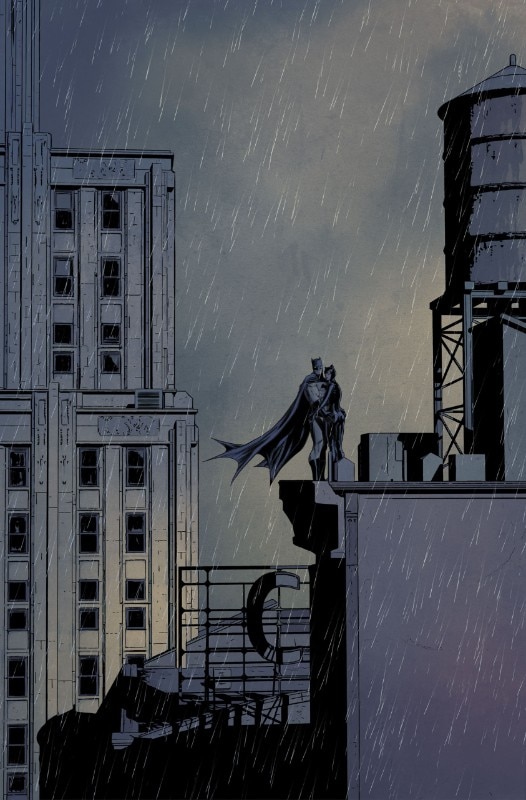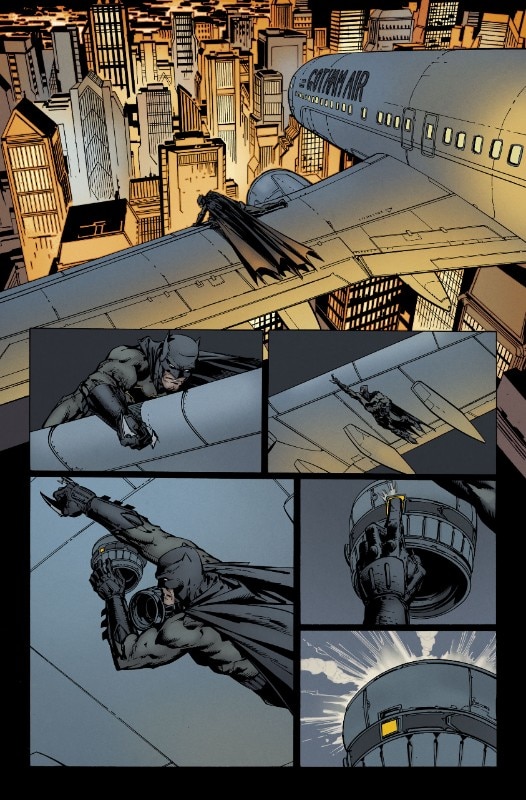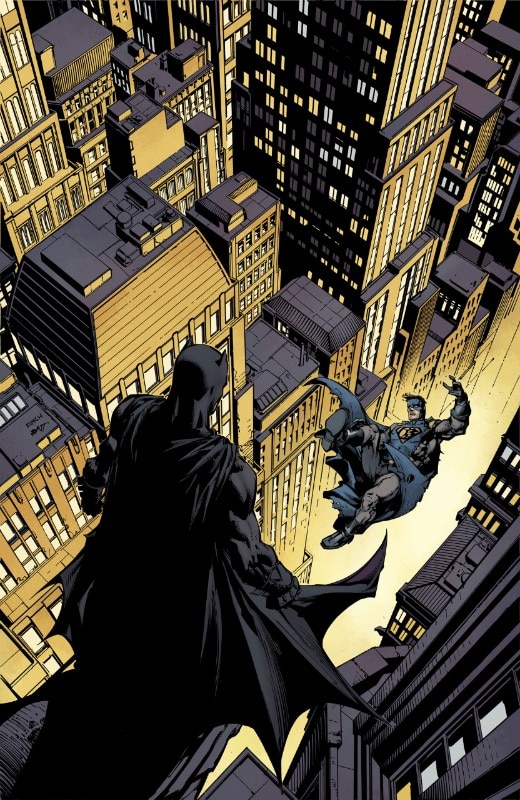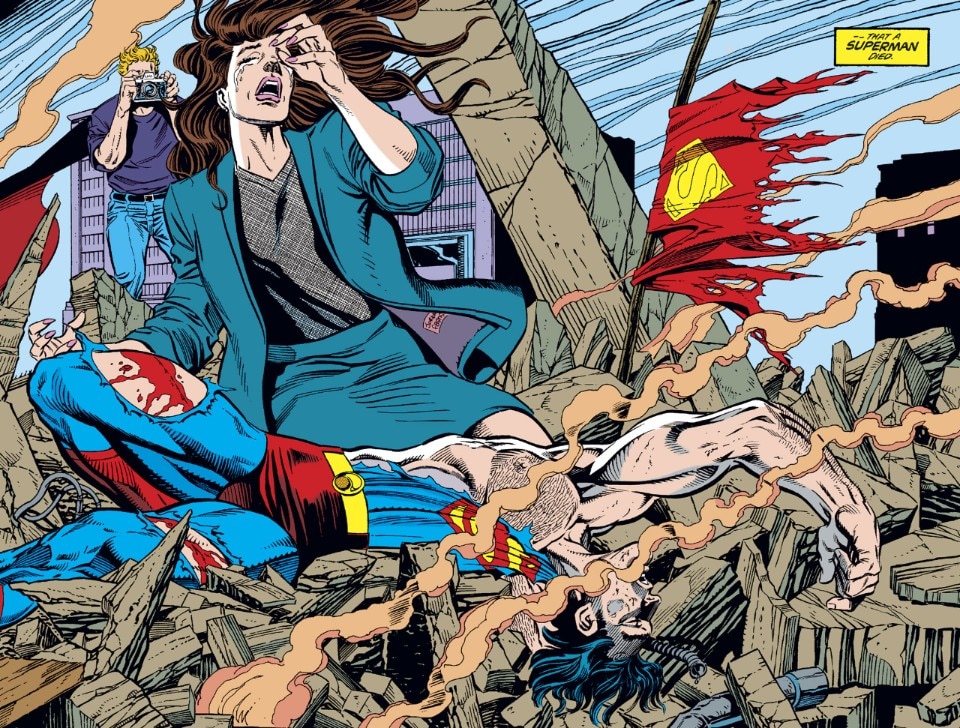On one hand the bright eyes that protect you in the dark night, on the other the shadow that darkens the day sun. Here Batman and Superman, a dichotomy of opposites that reveals itself through the cities they inhabit as well: Gotham and Metropolis. Two fictional metropolises that since the so-called golden age of American comics, the 1930s and 1950s, have developed two antithetical visions of the contemporary American city.
In one of their many crossovers, the two heroes describe these spaces in very different ways: in Batman/Superman #53 of December 2008, the Dark Knight defines Metropolis as “an art deco nightmare”, characterized by bright lights and rounded corners, while the Man of Steel refers to Gotham as a nightmare too, this time made of stone and metal. In fact, neither of them has distanced very far from the reality of things.
It is impossible not to notice the unique Gotham’s night skyline, the small lights immersed in the darkness. One of its most effective descriptions is certainly the one given by Neal Barrett Jr. in the first pages of the story Batman: The Ultimate Evil (1995), in which Gotham is compared to the City of Lights par excellence: Paris. However, despite the apparent romanticism behind such a suggestion, the reality is quite different. Batman observes Gotham as a perched gargoyle on the skyscrapers that stand out against the night sky. In the meantime, far below, the crime rages in the streets, between the shadows of the tall buildings resting after sunset and the cold and dim light of the street lamps, which cannot protect the citizens from the raging evil. An important example is given by Bat’s origins: born one night in the Crime Alley’s darkness, where Bruce Wayne ‘died’ along with his parents, giving birth to the Batman’s myth.
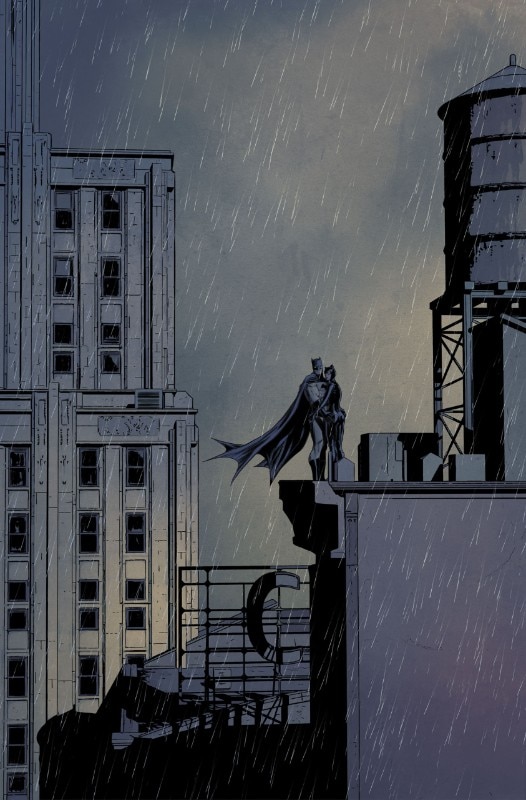
How deep is the relationship between the two heroes and the cities that host them? The recent Tom King’s run about Batman, a former CIA analyst and one of the most appreciated comic book writers of the last years, is certainly one of the most focused on the relationship between the Caped Crusader and his city. Particularly, the five-part story arc I am Gotham, opening his run in 2016, encapsulates all the deep, distorted and utterly addictive bond that has developed over the years between the cloaked mystery figure and such a refuge of criminals.
The way his mythology has been created over the years, Batman has become one with Gotham’s streets, in an almost symbiotic relationship. However, throughout I am Gotham something very peculiar happens. There are new heroes claiming the role of protectors of the city, even taking on its name, Gotham and Gotham Girl, two siblings who promise sparks. How does Batman react to all this? At least at the beginning, standing in the corner. He plods on, rigidly moves and always seems to arrive “second”, who is used to travelling at devastating speed from one part of the city to another. Even, a moment of strong symbolic content, the two heroes reply to “his” Bat-Signal, as required, in that cardinal place that unites the Hooded Crusader with the people he defends.
Batman begins to doubt. Therefore, the balance of Gotham crumbles under his slow and tired steps too: the buildings and the bridges collapse. People die. Planes fall. Everything goes in one direction, the chaos one, despite the fact that (at least theoretically) the eyes on the city have tripled as before. How could this happen? What seems to be the beginning of the end is, indeed, the beginning. The winding road King has put Batman on appears to be increasingly uphill: the Bat will be broken again, once and for all and in every way, and his city will go down with him. That is why it is no surprise that the scriptwriter’s narrative climax comes with City of Bane, the story arc that leaves the city in the grip of criminals.
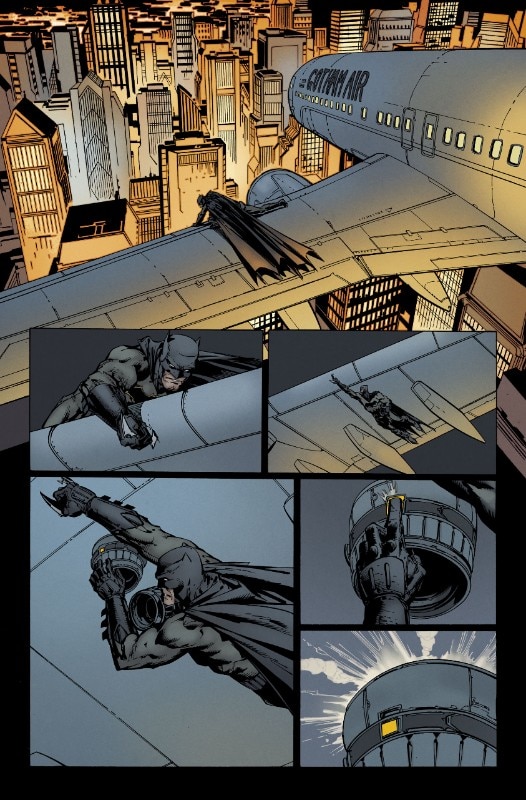
One of the most recent visual Gotham iterations was reconstructed by Christopher Nolan on Chicago’s streets, but the marked verticality of Bruce Wayne’s city is to be found elsewhere, in a place which, paradoxically, constitutes the greatest point of contact with the opposite city of Metropolis: New York. If it is true that Metropolis is inspired by it in its suggestive daytime panoramas, so it is Gotham’s modern version for its less reassuring and scarcely illuminated night-time hours.
Metropolis is the magniloquent city of opulence, where everything is bathed in sunshine and perfect in every way. Between the glass walls of its skyscrapers reside very successful companies, even if, very often, they are not exactly law-abiding. Gotham’s enemies are men of the street, those of Metropolis are the powerful ones. LexCorp, the villain Lex Luthor’s company, is the emblem of the city’s dark evil, that parasite that grows from within, that under a glittering façade destroys the lives of everyone it comes into contact with. Superman is not really a child of that place, or maybe it is because he has always been a Kansas boy (where he grew up with the Kent’s). Therefore, it is no wonder that Clark (or Kal) never internalized the connection to Metropolis as powerfully as Batman did to Gotham.
The discovery that even apparently invincible heroes can die dates back to Death of Superman (1992). When Doomsday and Superman collide, Metropolis suffers indescribable consequences: destruction everywhere, ruins and a huge number of victims. Nevertheless, the reconstruction passes through this tragic event too: the debris become an altar for Lois Lane, who in a moment of human pity holds her dying lover in her arms, while the red cape waves behind her as a flag of hope torn by the sad events; and the Metropolis that rises from that event manages to get back on its feet by rebuilding everything around the memorial dedicated to the Man of Steel.
But speaking of Superman, it is in an out-of-continuity maxiseries that the deepest link between the hero and the City of Tomorrow was shown. Throughout All-Star Superman, the award-winning twelve-book story written by Grant Morrison and Frank Quitely in 2005, the hero had to go through a sort of “last year” of his life to tie up all his outstanding issues. Readers were thus able to witness an extremely intimate moment, precisely set among those seemingly endless skyscrapers: the Blue Boy saves a teenager from committing suicide. But it is the huge buildings in the background that make the loneliness and the despair of the whole sequence even more pronounced. Behind the appearance of its splendour, that is Metropolis, Gotham’s worthy sister.


